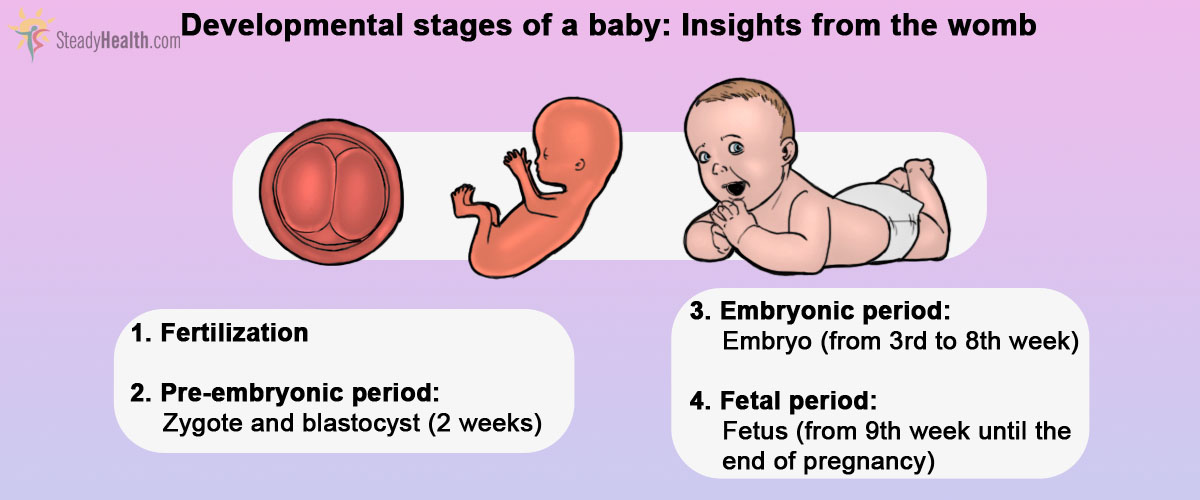Table of Contents
The human body, an amazing piece of work
Modern medical techniques allow future moms and dads to follow up the development of their baby. The normal ultrasound that can show you how your baby grows inside the belly, to the more recent 3D ultrasound technique, where you can even see if your baby is making faces. But even when pregnancy follow-ups are performed regularly, you can’t really see how your baby’s body is developing day by day.
Human development, and of every other animal, is an amazing process that occurs from the moment the spermatozoid fertilizes the egg. What is the first thing that starts forming? Is it the skeleton? Or is it the heart? In the next lines you will be able to explore the development of a baby, from its conception to its birth, and which main characteristics are formed on each stage of its growth.
The first step: fertilization
During sexual intercourse, semen is released into the uterine cavity of the woman and a race between the spermatozoids present in it to reach an egg begins.
The journey is not easy and only a few spermatozoids make it until this point. When encountering an egg, spermatozoids try to get pass through its outer layer and usually, just one of them will be able do this. Then both cells combine their information and form what is known as zygote. The process that comprehends the formation of the zygote lasts around 24 hours.
Fertilization of one egg by more than one sperm can occur, but it is pretty uncommon and the result of this would be an unviable zygote. Fertilization of more than one egg can happen too, which gives as a result the formation of two, three or more zygotes.
The pre-embryonic stage
After fertilization, the newly formed zygote travels from the fallopian tube to the uterus. Meanwhile, it starts a division process, which will give as a product a tiny raspberry shaped body, known as morula.
See Also: Signs Of Consciousness In Baby Brains From As Early As 5 Months
All these processes happen in a period of five days and in the sixth, the now called blastocyst reaches the uterus and attaches to the uterine wall.
By this stage, the uterine wall is covered by endometrium, a layer of epithelial cells and blood vessels that functions as a cushion for the blastocyst to stick. When no egg is fertilized, this cushion detaches from the uterus and initiates a process that occurs every 28 days, more or less, in every woman, known as menstruation.
- Mindmap by steadyhealth.com
- Photo courtesy of lunar caustic by Flickr : www.flickr.com/photos/lunarcaustic/3233482244


